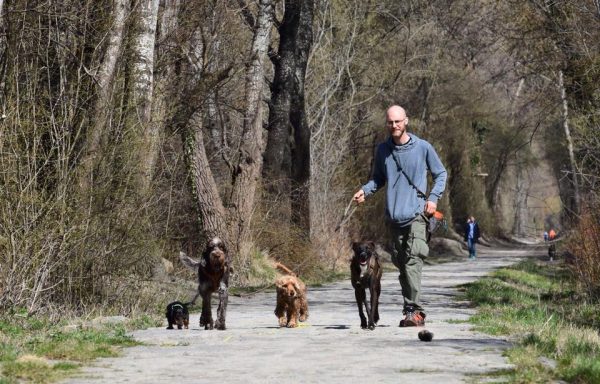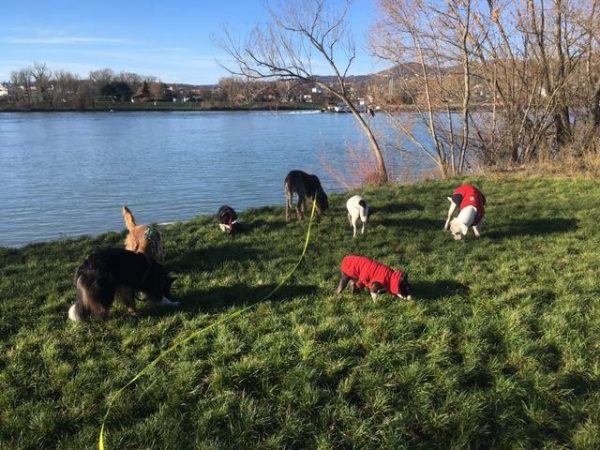The image of a dog walker in our heads (or mine at least) is that of the woman walking 10 tiny, fluffy dogs at once on the street of New York or of a veterinary student making some money on the side. As it happens, one of my good friends started out this way (as a vet student, not pet sitter for posh people in NYC). But the business – Donau Dogs – that she runs now with her partner is something quite different. I visited them in October to find out more.
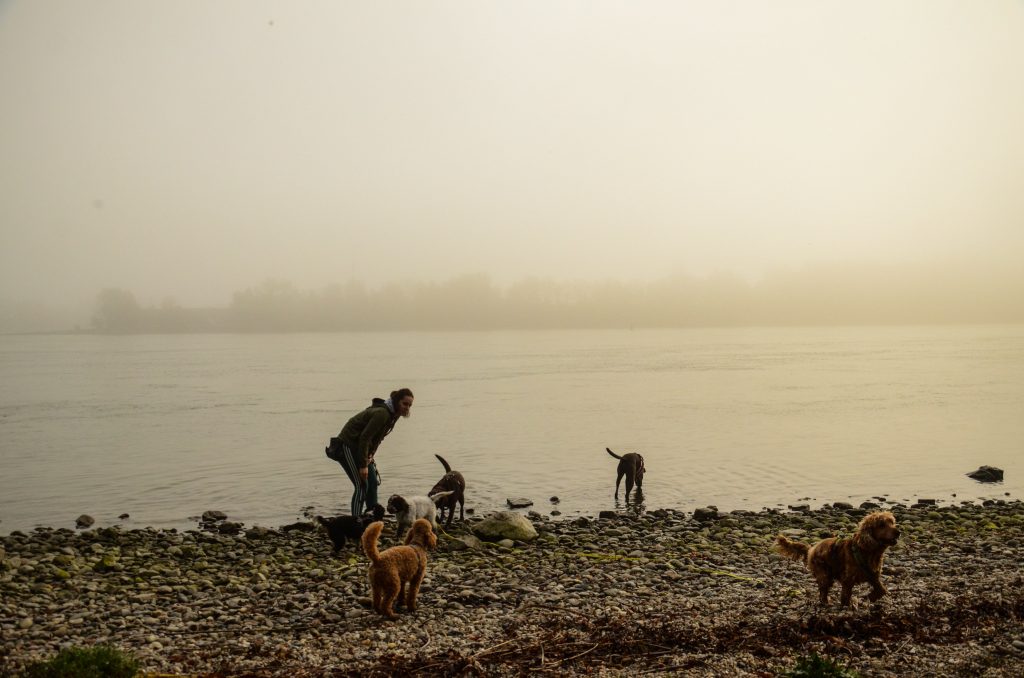
The bulk of their business consists of walking a group of dogs in the mornings – they take up to 10 dogs (5 per person) + their own two companions.
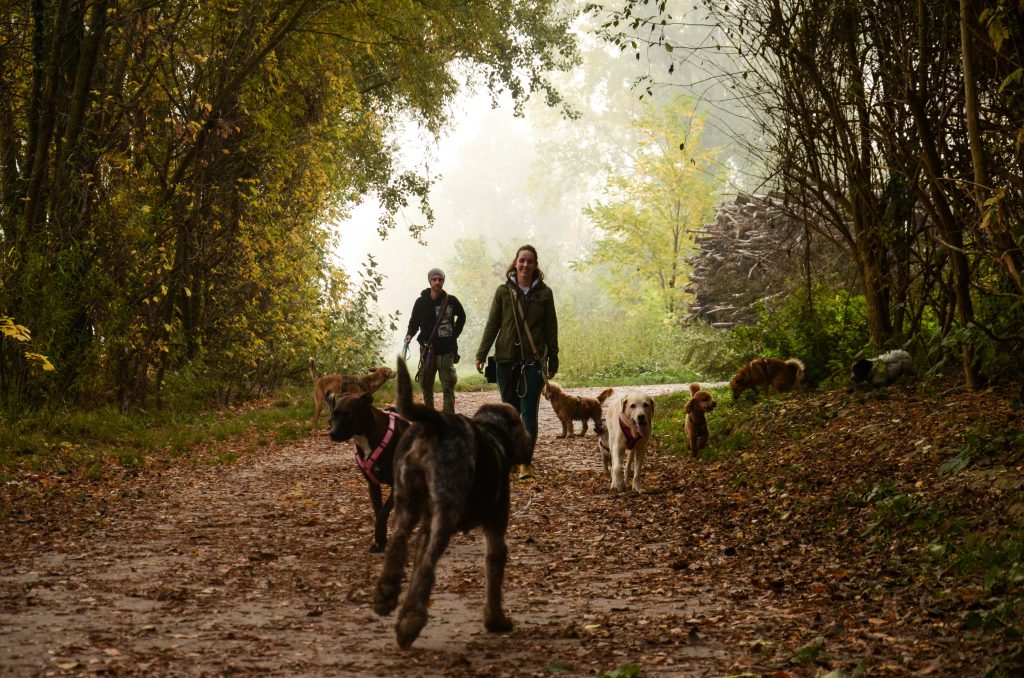
Managing a group this large requires strong focus and superb ability to read canine body language – the situation can spin out of control quickly with so many dogs, because, well, they are dogs.
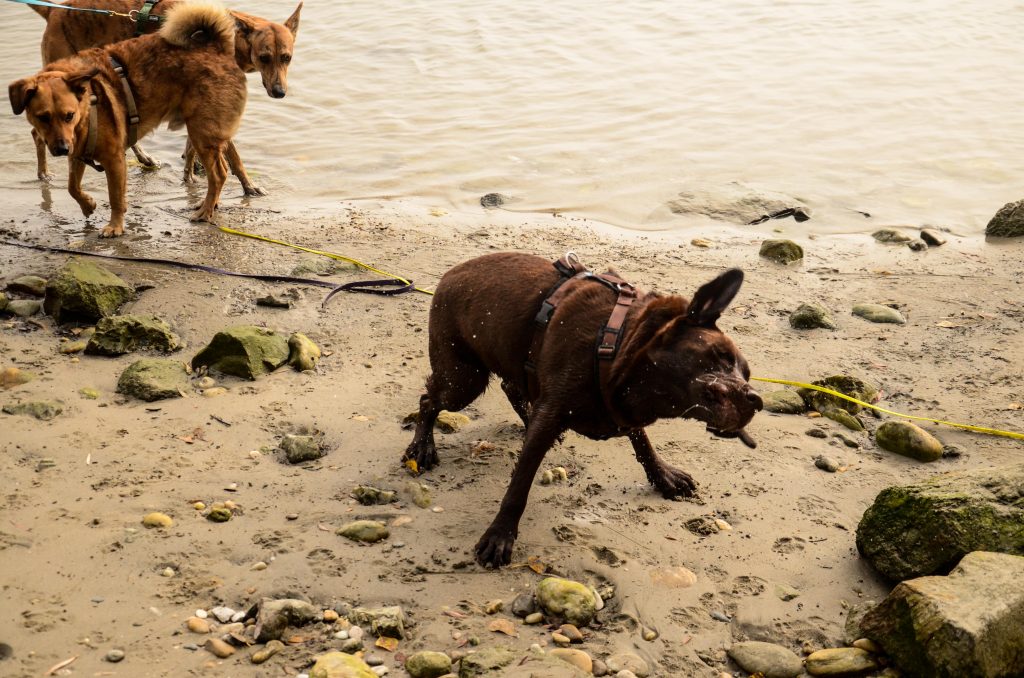
Choosing the right place to walk is paramount – the fewer other dogs you meet, the less you have to “police” the group.
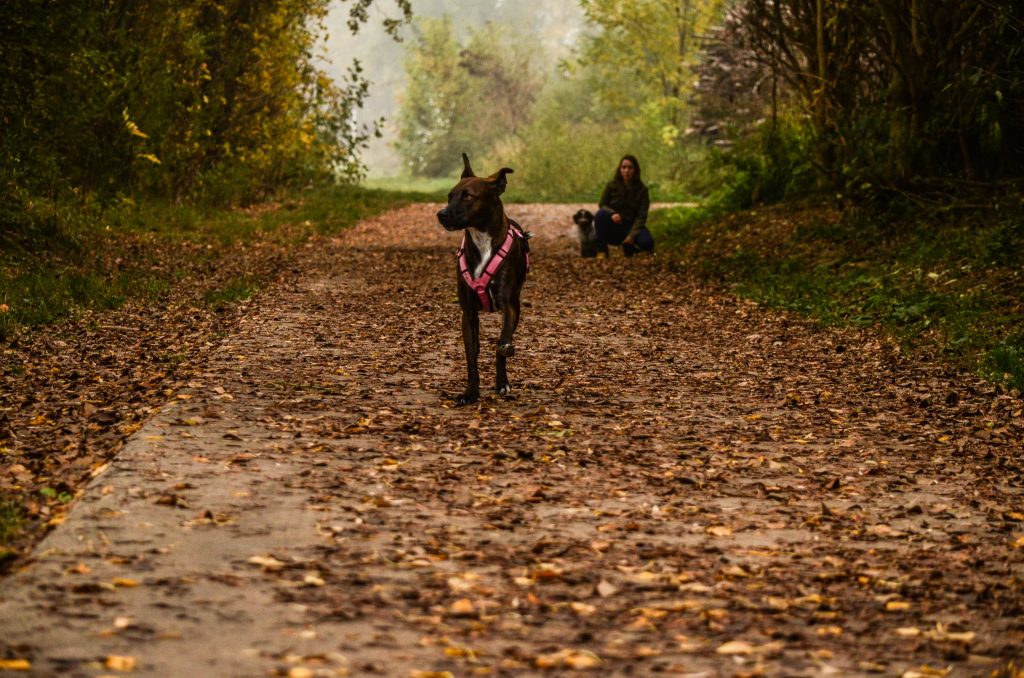
Contrary to popular belief they don’t have to take the dogs for a 10km tour, sometimes they barely walk 1km. But think about it in dog terms. The trip is bursting with stimuli: someone picks them up, they travel by car, get out, walk, sniff, play, search for food, see what the others are up to… That’s really tiring!
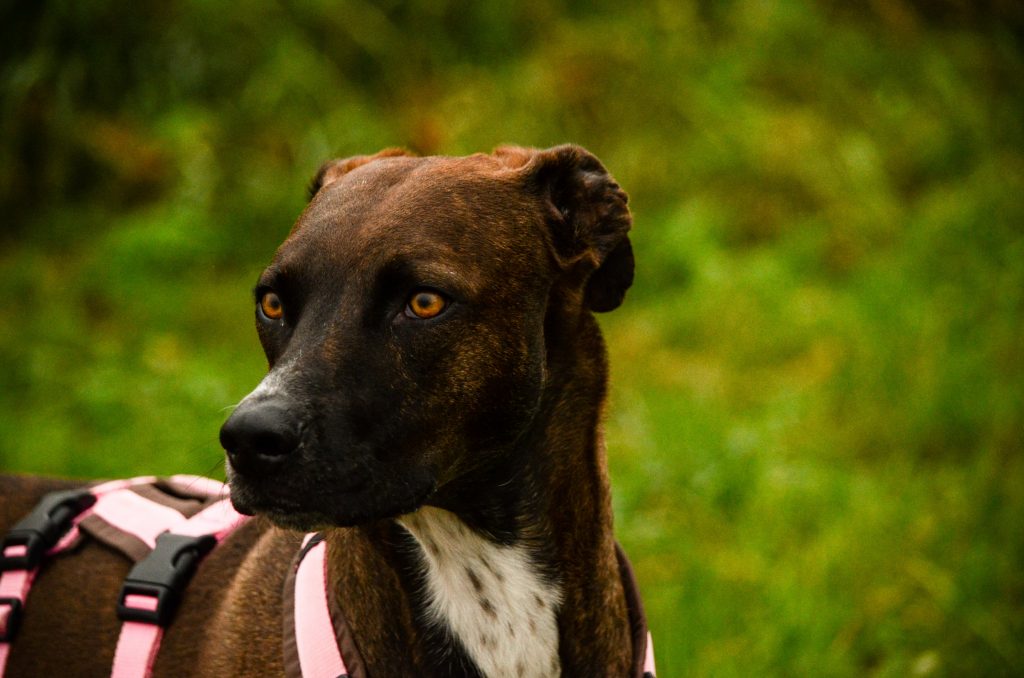
A new dog can join the group after an adaptation period when the owner comes along. The length of the adaptation period depends on how quickly the dog becomes comfortable with the group.
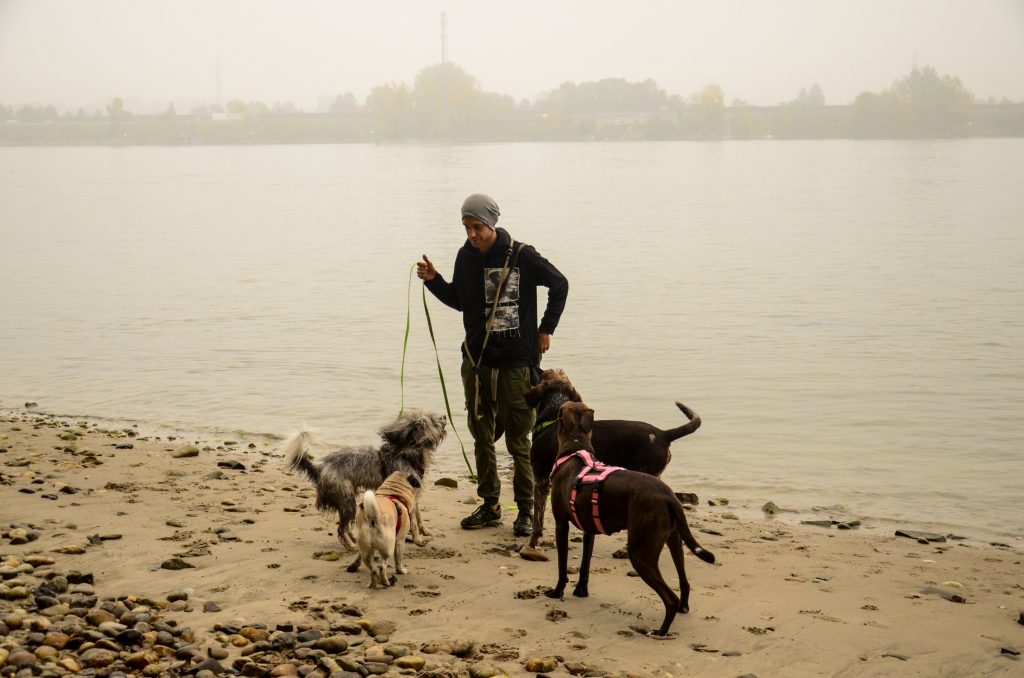
Most, but not all of them, will eventually enjoy off-leash privileges. Determining which dogs can be let off leash is an important skill. Some dogs just like hunting too much or are too excitable to be off leash in this situation. You just can’t pay the same amount of attention when you have 5+ dogs running around…
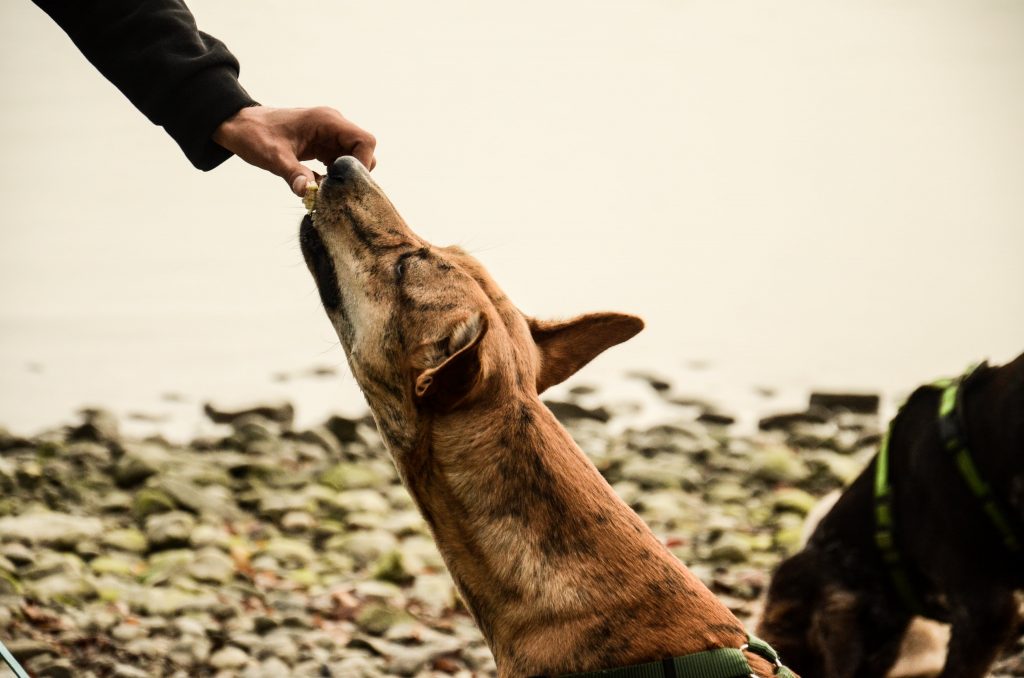
Food, best distributed generously, is one of the most important tools for a dog walker. Remember, these are not their dogs: that means that they have less reason to listen if something else catches their attention.
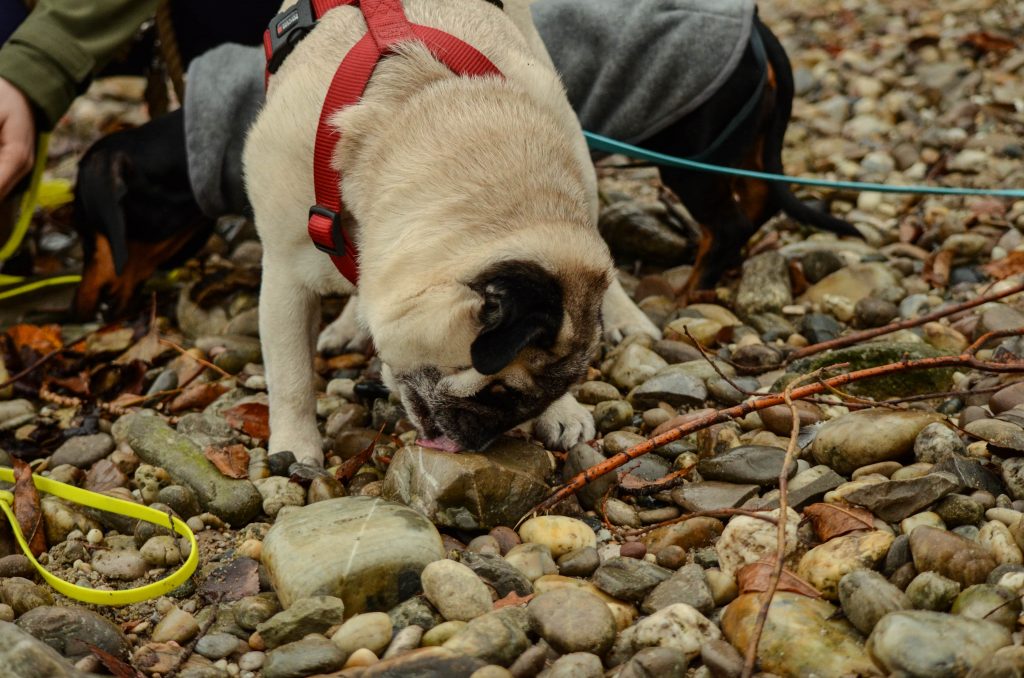
If none of the dogs have resource guarding issues, they won’t fight over food as long as there is enough treats for everybody.
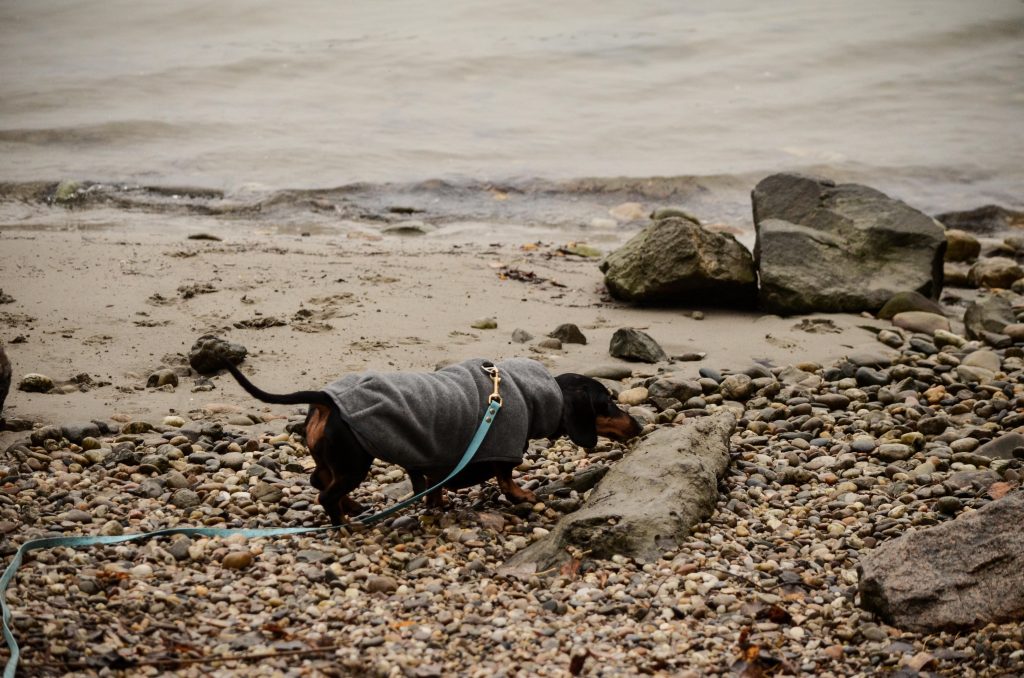
Apart from rewarding the dogs, the food can also be scattered for treat searches – sniffing is engaging, relaxing and can serve as a good distraction. Obviously, dietary restrictions need to be taken into consideration.
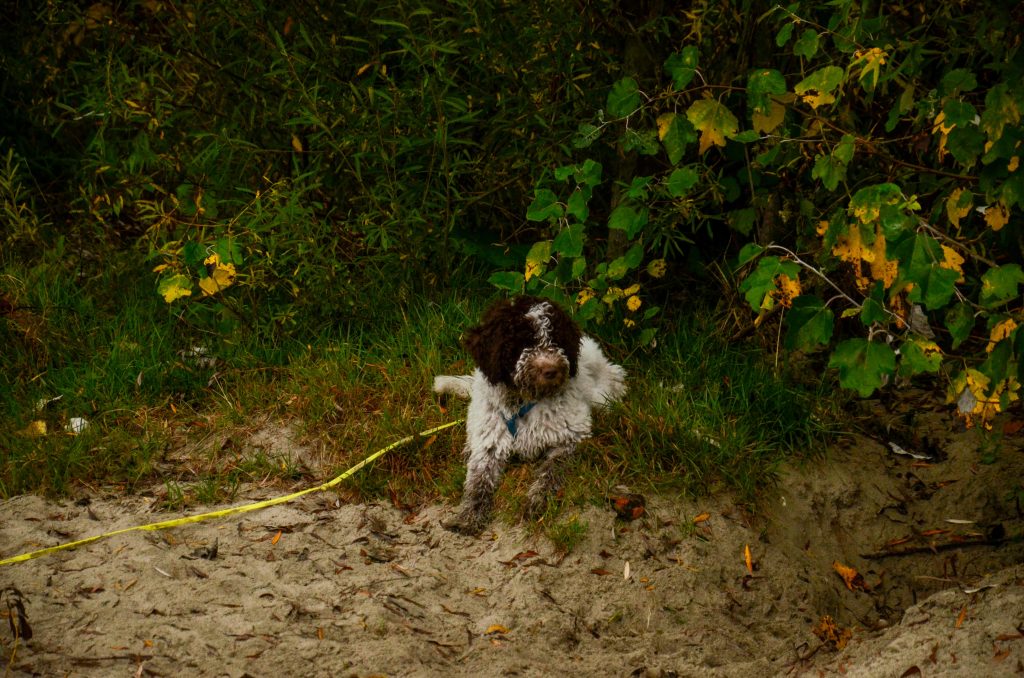
Special needs have to be respected. For example, if they have a puppy with them and the puppy wants to lie down and observe, then it gets to lie down and observe.

Being a dog walker is much more than just playing with the doggies. Actually, my friends spend as much – if not more – time driving around, as walking the dogs. They have to pick them up, bring them back home and so on. As you might suspect, they also spend quite some time vacuum cleaning their apartment…
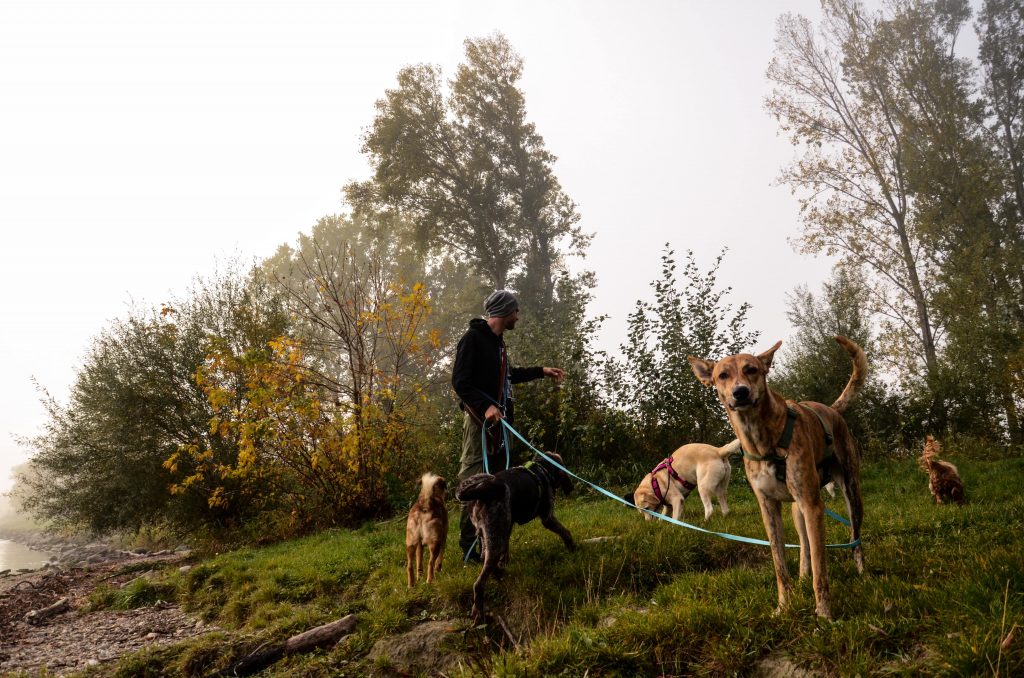
There is also a fair amount of administration and logistics involved to keep their human clients happy. But at the end of the day, what matters most to them is keeping their canine clients happy and that is quite simple. They get to do dog stuff: sniff, eat, frolic and occasionally roll in smelly things.














